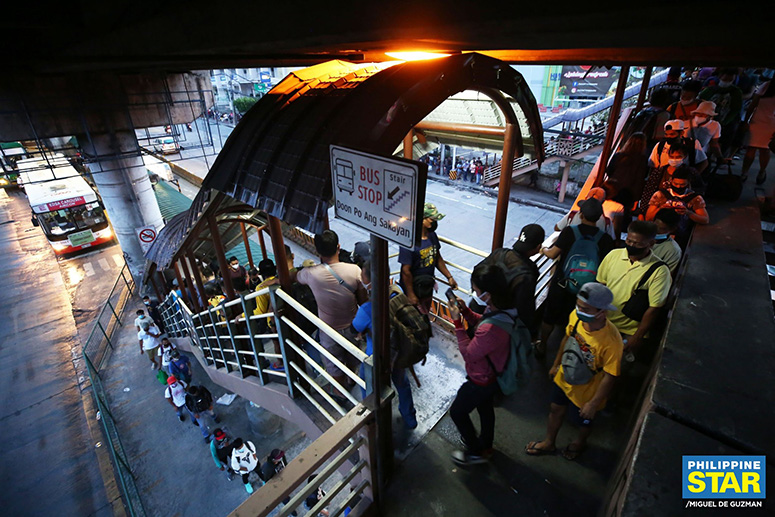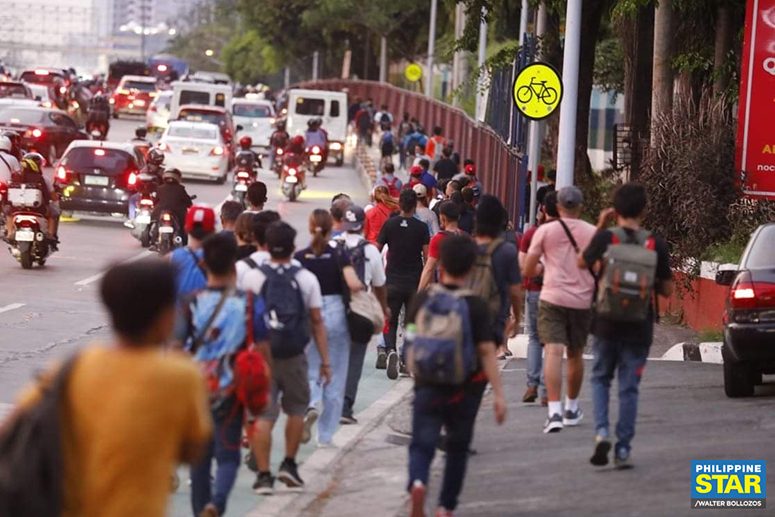One thing asked from leaders and decision-makers: Empathy

While in New York for the graduation of my youngest daughter, my kids and I took the subway and rode buses to go from one place to another. Most of the time, we walked whenever we could because the city is very pedestrian-friendly and has lots of green spaces. There are also bike lanes and bike racks everywhere, where passersby can easily rent bicycles for a small fee.
At that time, it was brought to my attention that photos of us commuting were making the rounds on social media. One thought came to my mind: In an ideal world — one where the mass transport system is efficiently working for the people — the sight of a public official like me commuting should not even be a big deal. But then again, it occurred to me that I was not in Manila, and a lot of work still needs to be done to turn the elusive dream of an efficient mass transport system in our country into reality.
Even before I became vice president, I had been a long-time commuter. From the time I was still a student in Manila to the time I became a lawyer, and on to my three years as a member of the House of Representatives and my entire six years as vice president, I rode public buses whenever I returned from Manila to our hometown in Naga City, and vice versa. I did it for the most practical reason: It was cheaper.
This is, after all, the very rationale of governance: to make the burdens of our people a little easier to bear, to make their dreams a little easier to reach, to uplift their lives the best way we can.
This is the same reason for millions of Filipino commuters who simply want to make ends meet and get to and from work safely every day. Unfortunately, commuting has become synonymous to a nightmare for toiling Filipino workers, whose day starts by waking up too early just to make it to their workplace on time and ends by getting home too late after a long and tiring commute, with just a few hours to be with their family and to rest. Long lines at MRT stations, overcrowded buses, jeepneys and trains, the scenes of “carmageddon” along EDSA — these have all become too familiar for daily commuters, especially in the congested metropolis.

This ordeal was further exacerbated by the COVID-19 pandemic, when the country was placed under the world’s longest lockdown. I personally saw this when we at the Office of the Vice President offered free shuttle services for health workers and frontliners when public transport was shut down.
Now that restrictions have eased, workers are still left with no choice but to squeeze their way through pre-pandemic queues and crowds, and put themselves at risk of contracting the lingering virus.
When I ran for the presidency, I laid out my plans for the transport sector. The goal really is to move more people — not cars. The reason for this is simple: Many Filipino households are carless, and the majority of all public transport users depend on road-based transportation like buses, jeepneys, tricycles and UVs. Ironically, from 2010 to 2021, almost all of the P2.8 trillion road program budget was allotted for road construction, widening and maintenance. A measly 1 percent was budgeted to expand our road-based public transport supply and capacity. Clearly, if we just follow the numbers, we will see that we are setting the wrong priorities.
Empathy is a spiritual muscle; the more leaders exercise it, the more it becomes second nature.
What the government should prioritize is a sustainable, productive, and pro-people use of road space. This means building a nationwide active transport infrastructure that focuses on more bus rapid transits, better service contracts and a just transition for transport workers, the expansion and improvement of protected bike lanes, better bus stops, and more railways for our people’s long-term needs.
These are all plans and proposals that any decent government can easily come up with. But for all this to work and come to fruition, one thing is being asked from leaders and decision-makers: empathy.

Indeed, what if every elected official commuted to and from work? This question does not pose some opportunity for a public spectacle or a PR stunt; rather, it is a challenge to build a culture of true, radical solidarity. Empathy is a spiritual muscle; the more leaders exercise it, the more it becomes second nature. This is the only way we can truly meet the needs of the people we serve — by reaching out to them, putting ourselves in their very shoes, and holding ourselves accountable for the suffering they are going through.
This is how we become more empathetic, more inclusive, and more effective as public servants. This is, after all, the very rationale of governance: to make the burdens of our people a little easier to bear, to make their dreams a little easier to reach, to uplift their lives the best way we can. And this can only be put into practice if those who govern truly understand the meaning of solidarity — by going out of our comfort zones and air-conditioned cars, walking in the slippers of the people not for show but for real, feeling their despair and embracing their struggles as our own.
Only then can we give way to a society animated by radical solidarity, where empathy is the default, and where every Filipino commuter is treated with the dignity and humanity he or she deserves.


